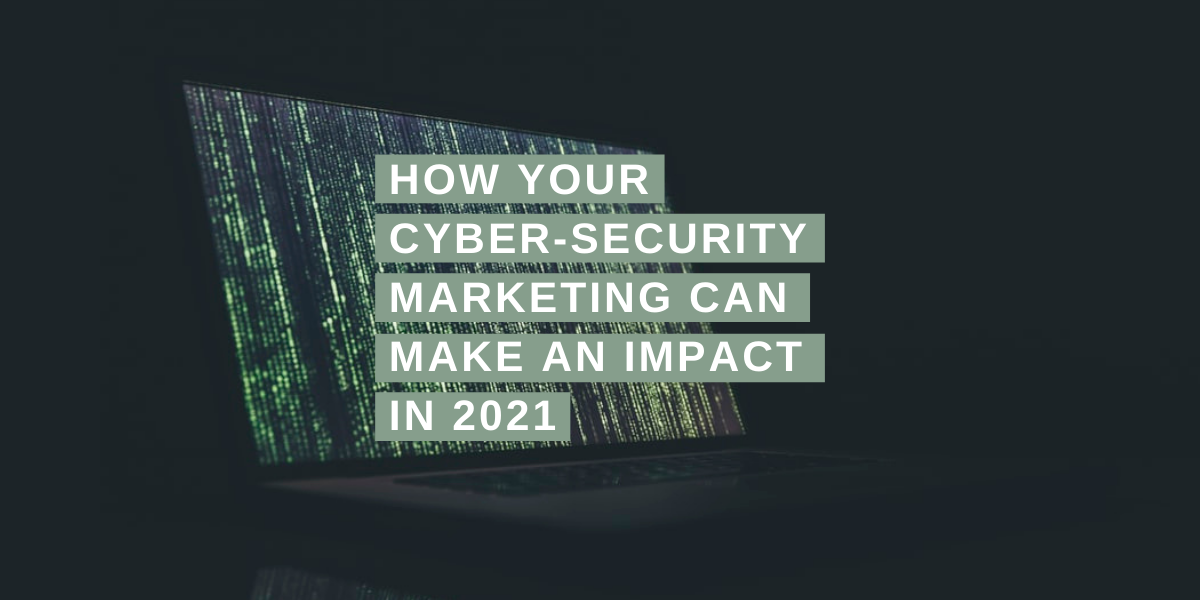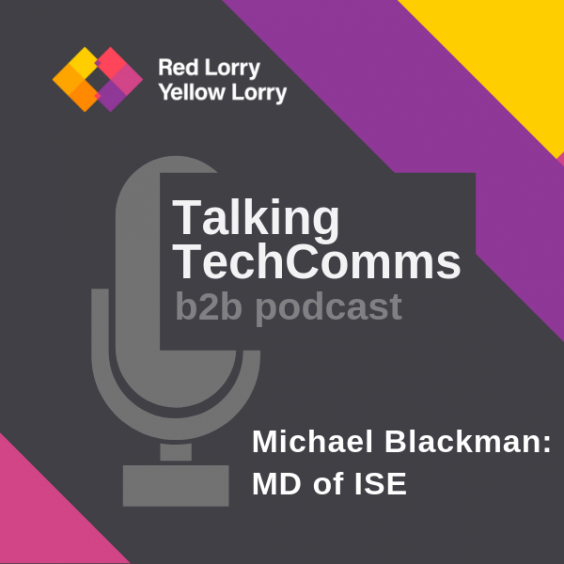We know that 2020 was a testing year for marketing and communications professionals. Brands had to pay especially close attention to the tone, authenticity and ‘humanness’ of their messaging – which some managed more effectively than others – while considering how Covid-19 impacted the language they use.
It was also never more important to engage target audiences in a way that addressed their specific needs and concerns. The challenge is that these can be significantly impacted by disruptive events like a pandemic, which is exactly what we saw in the cyber-security industry.
As a result, cyber-security companies had to adapt throughout 2020 based on customers’ evolving requirements. This, combined with the increasing level of competition in the industry, is putting pressure on cyber-security marketing teams as 2021 gets underway.
Shifting customer needs
Throughout last year, businesses were forced to react in different ways to keep themselves afloat during the pandemic. The most obvious was the need to adapt operations to cater for remote working when lockdowns and social distancing measures were introduced. As a result, business priorities related to cyber-security shifted.
In a nutshell, businesses became significantly more exposed to cyber-threats. McKinsey explains: “They have been monitoring spiking threat levels, including a near-sevenfold increase in spear-phishing attacks, since the pandemic began. Remote workers are also being bombarded with attacks based on COVID-19-crisis themes that are taking advantage of delayed updates to email and web filters, and using social engineering to prey on workforce concerns.”
Budgets have also been affected. On the one hand, many businesses are planning for an enforced period of austerity, with more than 70% of security executives believing their cyber-security budgets for 2021 will shrink.
But on the other hand, certain industries are having to up their investments. The insurance, public sector, technology and financial services sectors are expected to slightly increase their cyber-security spend over the next 12 months, with healthcare set for an even greater increase. In terms of products, network security, endpoint security and identity & access management will draw the biggest spend – representing the growing need to safeguard remote workers from heightened attacks.
This all means that the messaging used by cyber-security companies had to shift throughout the year in line with these changing needs and challenges.
Heightened competition
Although the intense level of competition in the cyber-security sector is nothing new, it jumped to a new level in 2020. As explained above, this was partly due to the accelerated demand from a wide range of businesses amidst the shift to remote working – which will continue throughout 2021.
But it’s also because there are now fewer touchpoints to engage potential customers. The lack of industry trade shows and opportunity to physically meet prospects has pushed everyone online, meaning cyber-security companies are competing for attention in fewer channels.
Digital fatigue is a very real issue – another webinar, anyone? – and brands are having to work harder to get their voices heard. This is one reason why b2b marketing is becoming increasingly indistinguishable from b2c marketing, in an attempt to sway customers with more entertaining, engaging and emotional content.
Ultimately, companies now have to work harder than ever to build their brands and stand out in the crowd. But, when it comes to cyber-security marketing, there are a few tactics that will help them make an impact in the new year.
Develop trust
The first step should be to focus on building trust with customers and prospects by being direct and honest in all communications. Brands must demonstrate a knowledge of customers’ evolving pain points in a way that is clear and easy to understand. So ditch the jargon, and make it easy for potential customers to trust you.
Add some humanity
Linked to this is the importance of being human. As prospects are being bombarded by marketing messages, cyber-security companies must find a way to connect with them at a more personal level. Try using more emotive content, show empathy and acknowledge the difficulties businesses are facing.
Drop the FUD
Companies still have a tendency to produce cyber-security marketing messages that promote fear, uncertainty and doubt (FUD). Scaring people into doing business with you is no way to build a brand, and could potentially backfire. Cyber-security companies need to address current realities in a way that’s educational and solution-oriented, and not fear-monger.
Show real-world impact
Finally, make it real. With customers under pressure to keep their businesses moving amidst so much disruption, they need to be confident that your product or service will deliver. Use case studies, customer stories and other proof points to demonstrate the tangible benefits you can provide and bring marketing campaigns to life.
2020 clearly demonstrated to businesses that being able to quickly adapt brand messaging based on what’s going on in the world around them is vital. This flexibility, along with the ability to create content that resonates with customers, will be key for cyber-security companies in the months and years to come.
Tell us what you think. Have you had a wild success or a dismal failure (but a good learning process)? Or, are you interested in discussing how we could help your b2b business? Let us know at hello@rlyl.com.




